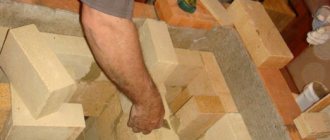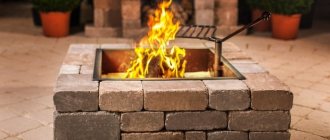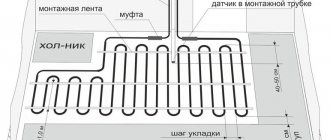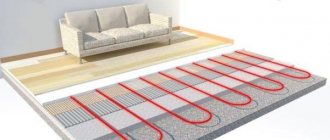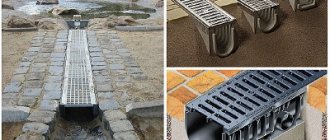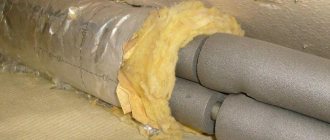Author: pynh
13 November 2021 09:32
Tags: dachas firewood storage methods
3496
19
Firewood in the country is a necessity. Even if you prefer to heat yourself using electrical appliances, in order to heat a bathhouse or cook a barbecue, you will need firewood. And if so, they need to be stocked in sufficient quantities and stored somewhere. And so that they are at hand at any time and suitable for use: chopped and dried thoroughly. So today let’s talk about the essentials - about storing firewood in the country.
Firewood must be protected from the weather
0
And this is true: leave the logs in the rain, and then try to light the stove with raw wood - a lot of smoke and a “fun” time are guaranteed. Therefore, we must protect our “strategic reserves” from rain and snow - at a minimum, cover the stacked woodpile with any moisture-resistant material (film, roofing felt, old slate, and so on - whatever is on the farm).
×
Which wood species should be preferred?
If you approach provision in a businesslike manner, you will begin collecting firewood in the period from November to February. This is the optimal time to purchase wood. In addition, the winter forest has minimal natural humidity. Such wood dries outside to acceptable humidity within six months. Over time, procurement was determined. Now you need to understand what exactly you should buy. To answer this question, you need to keep in mind what the firewood will be used for. Each type of wood has its own advantages and disadvantages, different heat capacity, burning rate and degree of heat transfer (this is affected by their humidity and density). The higher the latter, the longer the log burns and gives off more heat. The most commonly sold firewood is made from the following wood species:
- conifers (spruce, pine, larch);
- deciduous (alder, aspen, birch) species.
Needles
Coniferous firewood creates intense heat during the combustion process, but burns out quite quickly. In addition, these logs contain a high content of resins, which, during the combustion process, emit a light, pleasant aroma. Spruce and pine chocks have a beneficial effect on the human immune system and tone the respiratory system. Pine burns with a hotter flame. The spruce periodically “shoots” sparks and pieces of coal. This is the best choice for barbecue, grill or barbecue. But they can be used to light stoves and fireplaces only after thorough drying. The firewood used for this must have a humidity of ≤20%. Wood with a high index smokes heavily and releases resin. The latter settles on the internal surfaces of chimneys. Which reduces their flow area and worsens traction.
Birch
This material is optimal for any purpose due to its qualities. Birch logs:
- easy to light;
- characterized by abundant heat generation;
- duration of combustion;
- beautiful game of open fire;
- reasonable price;
- do not spark or “lose” embers;
- The aroma released during the combustion process has a healing effect on the condition of the human body.
The disadvantages include the high content of tar, which is released during the combustion process. It adversely affects health and settles in chimney pipes, reducing the draft of the heating device.
Alder
This firewood rightfully has the status of “royal”. They flare up quickly, burn for a long time and stably with significant heat release. The process is virtually smokeless. Combustion is accompanied by a pleasant aromatization of the air in the immediate vicinity of the fire. It is alder that people tend to use for smoking lard, meat and fish.
Oak
Together with the two above-mentioned species, it is one of the three best lumber. Due to its high density, it has a maximum burning time and high heat. The tart aroma is good for health. The only drawback of this wood is the high price.
Linden
Very slow and difficult to light. But after that it burns with a significant release of heat. Honey aroma treats colds.
Aspen
Difficult to light, burn out quickly. The only advantage is that they don’t smoke. Moreover, they are able to remove existing carbon deposits from the surface of the stove and chimneys. They are used primarily for this purpose (their calorific value is minimal).
The woodpile needs a solid foundation
0
You should not stack the bottom row of firewood directly on the ground: they will become damp and begin to rot. And it’s not worth it on the floor in a barn either. Usually a kind of “foundation” is laid under the woodpile: thick boards, or timber, or logs, or bricks - whatever you can find. In addition to protecting against dampness, this improves ventilation. Firewood dries better, is stored better, and does not suffer from mold, mildew and other problems that arise from moisture and stagnant air.
Video: tips for laying an oval woodpile for quality firewood storage
There are several more options for stacking firewood that will ensure their safety and quality. Different regions of Russia and other countries have developed their own traditions of coping with this task, and the secrets of this unique art are passed on from generation to generation. In the surrounding areas you can see beautiful houses and mushrooms, walls and pyramids, or even beautiful multi-colored paintings - all this looks like a separate branch of applied folk art. If you want to create one of these woodpiles, you should use your imagination, learn the rules for stacking firewood and show remarkable patience - then everything should definitely work out.
Convenient storage is not a luxury.
0
It’s worth thinking in advance: will it be convenient to stack the prepared firewood so as not to waste extra time and effort on it? Will it be convenient to take them when needed? Specially equipped shelves-cells, where firewood is arranged by type and grade, are a very practical solution. True, for those who need a supply of fuel for the whole winter, it is hardly applicable. But, regardless of the volume of preparations, you should take care of convenience - we try for ourselves
Firewood harvesting
Making a woodpile with your own hands is not a difficult task. It is perhaps more difficult to learn how to split and chop wood. This is only in fairy tales and epics. It is unusual for a modern person to work with both a chainsaw and an ax. It takes time to develop a skill and develop dexterity.
There is also plenty of brushwood at the dacha, but it burns quickly, it must be constantly tossed, otherwise the flame will be blown out by the wind or it will go out on its own. Large branches and massive pieces of wood burn longer, the wind is not a hindrance. This is why they are valued.
The length of the log usually does not exceed half a meter, often less. It is additionally split with an ax into four to eight pieces, sometimes more. This is done to dry the wood.
Freshly cut wood does not catch fire, smokes, produces soot, and does not burn completely. Drying a log will take much more time than drying firewood - in the inner layer, in the core, the plant juice circulates most actively, but in the bark it does not circulate at all.
By splitting the log into several parts, you can speed up the process by providing air access to the wettest part.
It is also convenient to stack firewood thanks to its triangular and square shape. More wood is placed in the woodpile. Logs will fall, it will be difficult to lift them and throw them. So it’s better to learn how to work with an ax or chainsaw. It is not necessary to use an ax - this is a tribute to tradition.
Firewood must be split taking into account the time it will take for it to dry and taking into account the life cycle of the tree. If you do this in the spring, they will dry out in approximately 4 months. Those cut at the end of summer dry for almost a year - 300-310 days.
But if you chop them in July, drying will take two and a half months - during this period the juice reaches the young branches and fruits most actively, and does not linger in the woody part of the trunk.
The fact that the firewood is easily stacked and a fairly stable monolith is formed is both good and bad at the same time. Air access is limited. It is advisable, before placing them in a woodpile, to dump them in bulk and leave them for a couple of weeks in a part of the yard where there is a lot of sun.
Where to store firewood
0
Perhaps, no matter how sad it is to talk about this, one of the primary criteria for choosing a storage location will be the question: do they steal or don’t they steal... Because if there are enough lovers of other people’s property in the area, then the only reasonable option is in a barn under lock and key.
0
Good firewood is not a cheap pleasure, and losing it would be very annoying, you must admit. So you will have to work hard and build a reliable storage for them. It can be located separately from other buildings, or combined with other outbuildings, or even adjacent to the house - the main thing is that all storage rules are taken into account.
Aesthetic component
An untidy pile of logs is unlikely to decorate the yard. Many owners try to keep their home cozy. But they forget that it begins not in the living room, but already in the yard. That's why you should take care of aesthetics when storing firewood. Attention is focused on important points.
Firstly, the layout of the logs can also be original. Fantasy and creativity turn it into a work of art.
Secondly, with the right approach, it is quite possible to turn ordinary heating material into an exquisite highlight of landscape design. Or complement one of the utility areas of the yard.
Finally, wood can be a wonderful decoration for a living space. Logs make the seating area much more comfortable. In fireplaces and stoves, special compartments are built in which fuel material is stored. And it always looks appropriate with a reasonable choice of location and storage method.
Firewood in the interior of a country house
Some people prefer to store a small supply of firewood in a basket or wooden box. The choice of products is huge, many of them are quite possible to make yourself. The purchase of a specific model will depend on the interior, which can be either modern or classic.
By the way, many homeowners still use buckets, wheelbarrows and baskets to transfer the required amount of material to the firebox area. The optimal solution would be to carry firewood, which you can make yourself. You will need thick fabric. Sometimes they limit themselves to two cords - they simply grab the logs. However, their use is not so convenient. In addition, there is always a chance of getting dirty.
A rag firewood carrier is easy to make
To make a classic rag carrier, you need a piece of fabric and two wooden crossbars. It is necessary to cut out a rectangular piece and process its edges with a zigzag and hem, and sew belt loops on the narrow sides. 2 pieces for each edge will be more than enough. The crossbars are cleaned and inserted into the belt loops. The result is a kind of bulk bag, which is ideal for storing and further carrying firewood.
Under the canopy
0
Building a firewood shed is quicker, easier and less expensive than building a woodshed. Sometimes such a building still has walls (on one or three sides - according to desire, opportunity and necessity). But they are often limited to just a roof on poles. It protects from bad weather and provides ventilation.
0
Moreover, the canopy can be either a free-standing structure or an extension to an existing one - a barn, a bathhouse, or directly to the house.
Safety always comes first
Any work with wood must be carried out in compliance with all safety measures. Dry wood can ignite like a match - just a small spark is enough. To prevent possible damage to residential property, to make heating safe for health and life, and to prevent accidents, firewood is stored as far as possible from sources of fire. Even if you put some wood in a stand near the fireplace, make sure that sparks will not fly onto them. Otherwise, fire is inevitable.
Completely unforeseen circumstances can also lead to ignition. For example, a cigarette butt dropped near the woodshed. Or a short circuit near where you store wood. It is better to prevent such situations in advance than to deal with the consequences.
The second important point is how to store firewood and prevent a structure consisting of many logs from falling. The base must be level. Metal sheets, wooden pallets, even bricks and boards are used as a base.
The firewood shed must be stable and comply with safety standards
Along the wall of the house
0
A woodpile under the windows can even become a unique and very colorful decoration. And in the summer it is convenient to use it, for example, as a stand for a box of flowers. But from a practical point of view, such a decision is justified if all storage rules are followed. This method also has its opponents, by the way: they claim that in this case the facade of the house is poorly ventilated, which is not at all useful for it.
0
Well, others at this time lay out an entire wall of firewood right under the roof of the house - and consider this solution convenient and correct. I think a lot depends on the climate here, and the material of the building itself plays a role. And, of course, you shouldn’t stack the woodpile close to the wall - even if it’s small, you should leave a ventilation gap. It is useful for firewood and will not harm the house.
Photo gallery
The listed methods of stacking firewood differ in the amount of material used, placement, and labor costs. Today, woodshedders have another interesting function - decorative. They have interesting architectural forms, laid out in the form of a spiral, balls, animals, paintings and outbuildings.
To build such compositions, you need to have a lot of experience, since decorative stacking of firewood in a woodpile requires patience and artistic taste. You can see unusual woodpile options in our photo gallery.
Under the stairs
0
If the space under the stairs allows, you can put a full-fledged woodpile there. It’s very convenient and practical: the firewood is protected from the weather and is always at hand, so you don’t have to go far to get it. In fact, this is the same idea of storing firewood near the wall of the house, but there are no problems with protection from rain and snow.
0
And even if there is not enough space, you should not completely abandon the idea - a small “handy” supply will always come in handy.
Classic and easiest option
A square woodpile made of knocked together boards is both a place to store firewood and an additional surface on which you can put a basket of fruit, a bottle of kvass, and put gardening tools. This woodpile for firewood is made very quickly with your own hands - no special skills are required. You just need to put together a frame.
Knowing what its length, height, width should be, it is easy to draw a drawing or sketch it in a notebook or notebook. This will help you not deviate from the goal and will reduce the risk of errors and inaccuracies. It will be easier to compare the idea and the result.
A firewood rack for a summer house can consist of purchased or hand-cut boards. You will need nails and a hammer. Later it can be painted in an interesting color, or an abstraction can be painted in different colors.
The question will not arise of how to make a woodpile with your own hands if you were building a greenhouse and had polycarbonate sheets left. You can purchase this material specifically for creating a firewood shed, evaluate its beauty, reliability and practicality, and then build a greenhouse or a gazebo from it.
Sheets of polycarbonate in bright colors will brighten up the area, perhaps even better than firewood.
Just out in the open
0
A very common method in our villages. The woodpile is installed in free space (in a utility yard, near a fence, along a garden path, and so on - wherever it is more convenient for the owner). It is usually used when a lot of firewood is needed. Here it is very important to take care of the stability of the structure and be sure to build it on a solid foundation so that the lower rows do not rot.
Types of firewood
It will take very little time to make your own woodpile. The design is elementary. By looking at the photo of the woodpile, you can once again be convinced of this.
A lot of attention should be paid to aesthetics, otherwise an important component – the decorative function – will be lost. You can rely on your strength, imagination, available materials, and start creating a drawing. Or you can take a closer look at those options that you definitely can’t do on your own.
Metal woodpiles, for example, can be ordered from a blacksmith and painted or varnished. They can be supplemented with forging. Flowers made of metal, foliage, an abstract combination of geometric shapes and lines will perform a decorative function.
The design will be light. Even a large metal woodpile will look great on a summer cottage with a small area.
Types and uses of garden rakesNew Year in the yard: how to beautifully decorate the yard with your own hands!
- How to make a modern landscape design with your own hands?
Woodpile as an art object
0
If the owner of the plot is a creative person, it is quite possible that he will want to stack the firewood in some unusual way - not like everyone else, and so that the woodpile not only serves as a source of fuel, but also as a decoration for the yard.
0
There are a lot of options here. It’s only important, while getting carried away by creativity, not to forget about the main purpose of firewood - to keep us warm in the cold winter. Therefore, if you need this type of fuel not only for beauty, you should think about how practical such an art object will be.
Foundation of the building
The load when storing several cubic meters of firewood will be minimal, and even if 10-12 cubic meters are harvested for heating a country house in winter, regardless of natural humidity, wood type, and climate conditions. The firewood dries out little by little, its weight decreases, but even with the maximum load of the stacks in the woodshed, the weight will be something like 500 kg per cubic meter.
Due to the low load, the requirements for the base are minimal. You don’t have to think about the foundation - you definitely don’t need a slab or tape. Although, with an increase in storage volume, it will be necessary to arrange an inexpensive pile foundation. It is created by drilling holes for placing concrete in the ground. You can do it like this:
- Drill holes in the ground up to 100 cm deep, 20-25 cm in diameter, 6 pieces, along the marking line for the construction of the structure;
- Install roofing material in a circle around the holes, with an overlap of 10-15 cm at the ring connection and fastening to a bracket or wire;
- Lower a tied rectangular reinforcement frame made of 12 mm steel reinforcement into the recess, with an exit 20-25 cm above the ground level;
- Fill the finished form with concrete;
- After gaining strength, weld the heads of sheet steel piles to the reinforced frame, or cut them along a single plane, setting the required level!
Detached extension. Features of construction
Think through the construction project carefully in detail. Check out photos of woodshedders on the Internet, download ready-made drawings and watch videos on our website.
To avoid mistakes during construction, keep two things in mind:
- Location. It is advisable that it be located on a hill. The place was not heavily illuminated by the sun, but was protected from precipitation. A minimum of sunlight and a maximum of fresh air are the key to ensuring that the storage location is well chosen.
- Dimensions. Before making a woodpile, calculate the volume of firewood that you plan to store in it.
Having drawn a basic drawing on paper, you can begin the work process.
An extension for firewood is a great space saver
If we describe the construction process, it will briefly look like this:
- Bury the posts around the perimeter of the future canopy. Use materials such as concrete, wood or steel pipes. To make the structure more stable, each hole is filled with crushed stone and filled with concrete mixture.
- You need to lay roofing felt on the already finished foundation. It will prevent moisture from entering.
- It is not difficult to form the binding at the bottom. To do this, logs are attached to the posts to a height of at least 10 centimeters from the ground. By placing bricks, you will provide additional reliability to the structure. For strapping, a beam connected with steel corners is used.
- When the logs are ready, lay the floorboards and cover the frame with suitable material.
- When installing the rafters, make sure that they are located at an angle. Neither water nor snow will linger on the roof.
- All that remains is to lay the roofing material - and a small shed for storing logs is ready.
- To give the woodpile an original appearance, you can complement it with original lighting, install carved figures and other decorative elements on the roof. Someone even manages to put a round woodpile, turning a boring canopy into an amazing decoration of the site.
Note to the builder. If wood was chosen as the main working material, it is necessary to treat it with an antiseptic or any other protective impregnation. And when the structure is ready, apply paint and stain. You will provide reliable protection for the tree from premature rotting and insect damage.
What to create a frame from
In order for the firewood to “lie quietly”, the woodpile needs a frame. It is usually made of metal or, much more often, wood. Both materials have advantages.
Tree
As a rule, wooden products in the private sector are not difficult to make by simply collecting the remains of building materials - any boards, bars, trimmings of beams. Advantages of a wooden frame:
- budget cost;
- quick assembly and no need to use complex equipment;
- light weight and potential mobility of the structure;
- fairly long service life;
- attractive look.
But the tree also needs pre-treatment to prevent rotting and the infestation of wood-destroying insects, and further care.
Parallel formation
How to stack firewood? The simplest option is to place the pipes in stacks. Butt the logs end to end, forming a layer-by-layer structure. The individual walls of firewood should touch at their ends. It is important that adjacent structures have some slope towards the inside. Do not allow the walls to lean outward. As the height of the raspberries increases, the distortion will noticeably increase during laying. The walls will certainly begin to crumble to the sides where there is no support.
To achieve increased stability, lay several parallel structures at the same time. The result is an economical formation, which makes it possible to fit a significant mass of pipes on a limited piece of personal plot.

